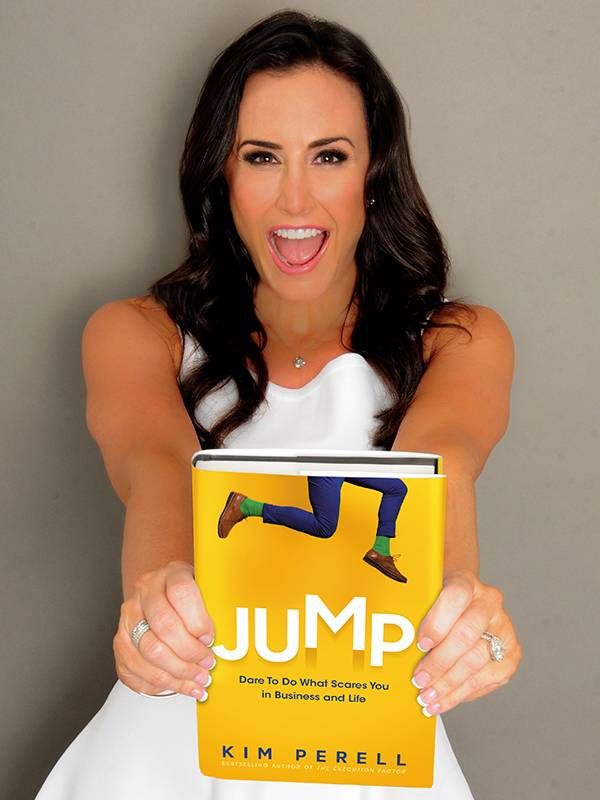Starting a Business? How to Create a One-Year Success Plan
Step-by-step advice from the author of 'Jump'
Depending on what you're trying to accomplish, a year can feel like an eternity or a heartbeat. But in my opinion, a year is a useful yardstick for planning to launch a business since it provides you with just enough leeway to prepare yourself and take action, but not so much that you'll end up spinning your wheels.

Your one-year success plan for starting a business will be your secret weapon to navigating this new territory. And trust me: you need a plan. You wouldn't go into a forest without a map, and you shouldn't make a big jump without a plan.
Corporations think in five- year increments, and even entrepreneurs tend to need more than 12 months to make huge changes. But both entrepreneurs and companies can agree that one year can make a world of difference, especially when motivated.
I recommend setting aside at least four to six hours to complete the plan.
Your Plan Should Be Aspirational (Yet Attainable)
In order to create a plan that you'll actually use — one that pushes your boundaries but is also feasible — you need to start with your vision. So, before you think about what you need to do to get closer to your goal, daily, weekly and monthly, think about the goal itself.
But both entrepreneurs and companies can agree that one year can make a world of difference, especially when motivated.
Create a vision board that shows what your life will be like at the end of these amazing 12 months. Start journaling about the transformations you want to make and describe them in detail. Or write a news story about who you'll be one year from today. Pick a publication or newsfeed you read daily and create a headline that starts with your name and includes details about what you accomplished, what you started, what you invented. Then write a mock news story explaining your road to success!
As you dive into the planning process itself, think big . . . but also keep the plan simple, streamlined, and practical. Overcomplicated plans never work out.
You don't have to have a plan so simple that it can be boiled down to four steps, but you do need something that can be explained in a few sentences. Consider how you'll build in flexibility and milestones so you can have a few bursts of motivation along the way.
Developing the Right Plan for You
I'm going to guide you through the process of creating a one-year plan that's simple and flexible so you can start taking baby steps toward your eventual jump. Even if you need more than a year to work up to this jump, let's start by planning out those first, crucial 12 months. Then, as you start to see progress, you can adjust your plan or build on it.
Your first task is to write down a clear vision on a piece of a paper that includes these three things:
- Where you want to go in one year
- What you want to accomplish in one year
- Who you want to become
This should be like a personal mission statement; it should be passionate but concise, just one paragraph.
Once you have a clear vision, start working backward, building a framework of milestones you need to hit. What's the second-to-last thing you need to do before you jump? And before that? This reverse engineering process will help you get a sense of how long each step will take and when it will need to be completed.

Use whatever tool feels easiest to you: a spreadsheet, a cheap 12-month calendar, a blank document. Attach due dates and deliverables to everything in this plan, or it won't get done.
Getting an accountability partner is a great way to keep yourself on track and ensure you follow through with your commitments fully and on time. Choose someone who will ask you the hard questions and hold you responsible to the goals you set for yourself.
Success doesn't happen overnight, and it takes time to achieve a big goal. Throughout my career, I have found that celebrating small wins along the journey was an important way to track incremental progress and keep motivated and energized.
When I started my first company, we celebrated everything from hitting monthly revenue targets to specific team accomplishments, like completing a prototype, to the anniversaries and birthdays of each employee. To commemorate each achievement, we did everything from going to sporting events, concerts, picnics and happy hours to holding barbecues in the company parking lot and taking summer Fridays off. This reinforced our progress and created a culture where people felt appreciated.
Your one-year success plan needs to become part of your life and part of your routine. Put every single task and milestone in your calendar and set up reminder notifications so the activities and goals you've meticulously outlined will actually get done. The mini- jumps you take en route to the big one need to happen at regular intervals to ensure progress and build momentum.
Set Yourself Up for Success
Goal setting is a powerful process that gives you the motivation and direction you need to achieve success. I like to create SMART goals (goals that are Specific, Measurable, Attainable, Relevant, and Timely) that I can work toward and track my progress on. This helps you get used to the idea that you have control over your life and that you have the ability to accomplish anything you put your mind to.
Big or small, you should always have a few goals you're working toward. If it's a small goal, accomplish it quickly and move on to the next. If you set a larger goal, break the path into small, achievable, realistic steps — ones you can make daily progress on.
A Path Leads to a Path
If you're convinced that you can shorten your timeline, by all means give that a try.
Life is full of unexpected twists and turns. So don't waste your energy trying to predict every possible scenario that might happen! This one-year plan is the start of your path. It's the trailhead. Follow it now and remain open to the paths that may show up along the way. Take your first steps with an eager, optimistic Beginner's Mind, embrace your curiosity, and revel in the newness of the unknown.
If you're convinced that you can shorten your timeline, by all means give that a try. But there's a reason I named this "Your One-Year Success Plan." A year will whiz by. To ensure your success, I've created a free one-year success plan template you can download with a step-by-step, month-by-month plan to make it easy for you to stay on track. You can access the plan at my website, Kimperell.com.
Editor’s note: This article is excerpted from the new book "Jump: Dare to DoWhat Scares You in Business and Life" Copyright © 2021 by Kim Perell. The book was published on Nov. 16, 2021 by Harper Leadership, an imprint of HarperCollins Publishers. Reprinted with permission. This article is part of America's Entrepreneurs, a Next Avenue initiative made possible by the Richard M. Schulze Family Foundation and EIX, the Entrepreneur Innovation Exchange.


